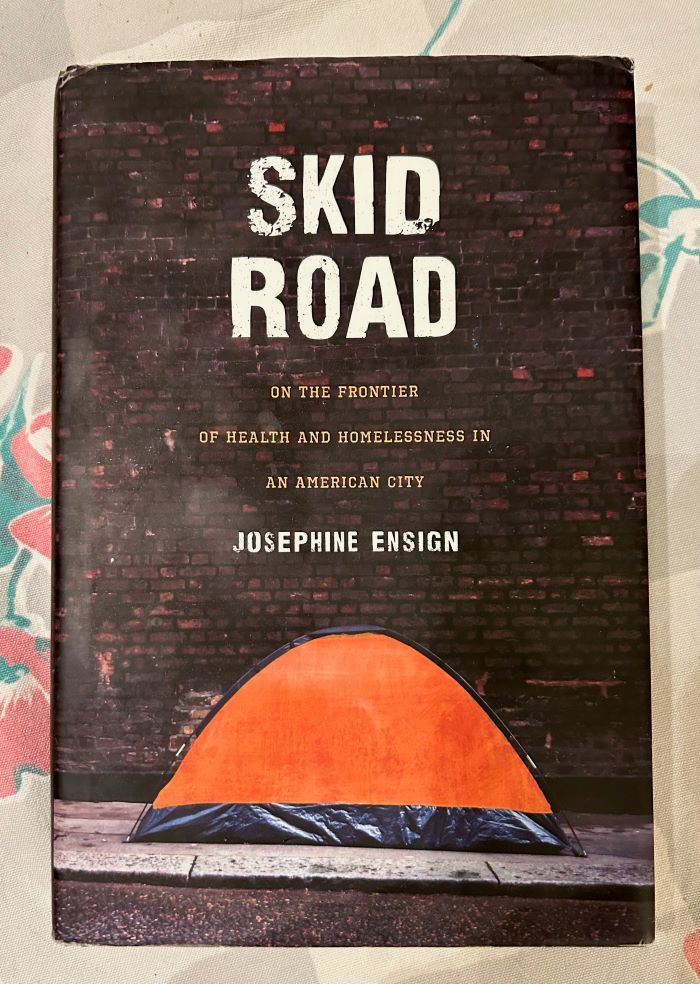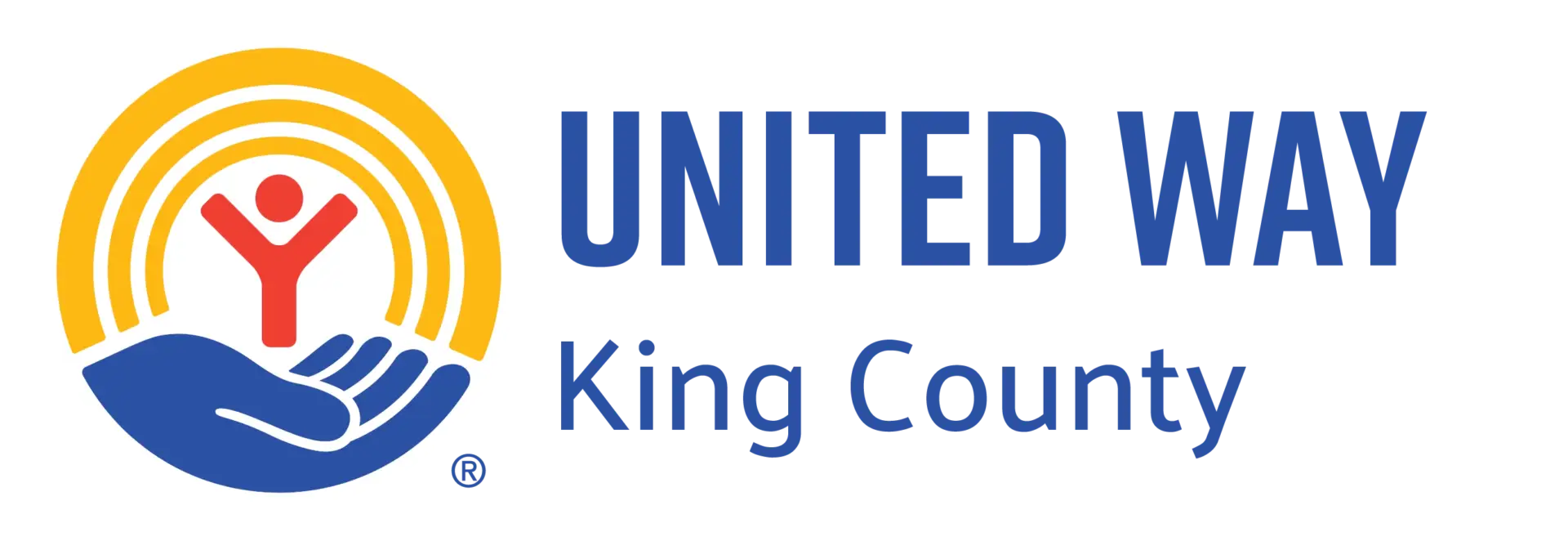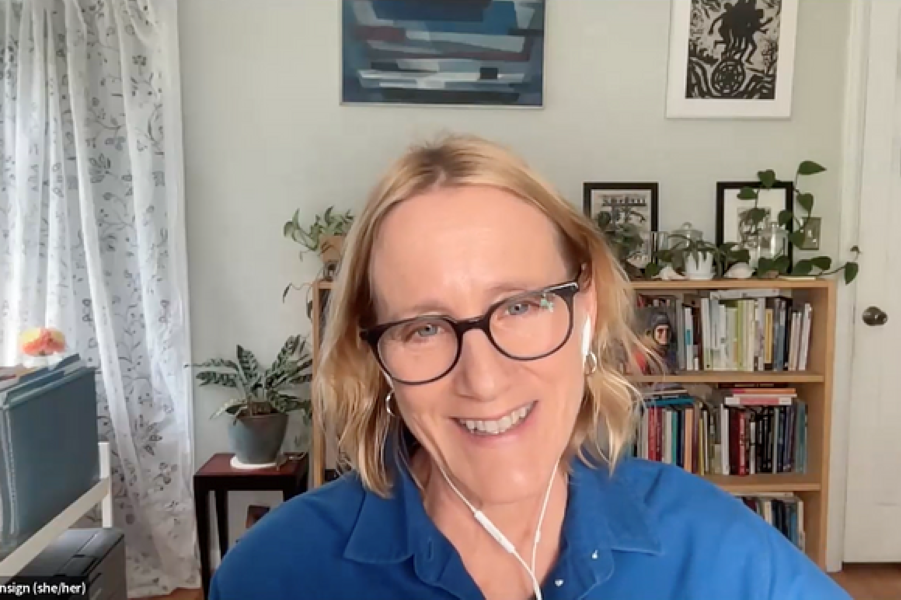Conversations for Change: Seattle’s History of Homelessness
How can a presumably progressive city like Seattle have such a large and deeply entrenched homeless population?
That’s what Josephine Ensign, an author and local professor who once experienced homelessness herself, asked a virtual audience during a recent United Way of King County Conversations for Change event.
The event’s guest speaker and author of the book, “Skid Road: On the Frontier of Health and Homelessness,” Ensign, didn’t answer the above question, instead offering a historical perspective of how the problem reached such gravity and scope. A professor of nursing and adjunct professor in the School of Arts and Sciences, Department of Gender, Women and Sexuality Studies at the University of Washington, Ensign also offered some ways everyone can get involved in addressing the crisis.
Ensign spoke of the area’s first known homeless individual, the period where Seattle’s first occupants—its Indigenous population—were pushed off their land, the land covenants and discrimination practices that denied housing opportunities from people of certain races, ethnicities, and faiths, and the current skyrocketing rental costs that spur evictions.
Given that timeline, it’s no wonder that Seattle ranks third behind New York and Los Angeles among U.S. cities with the largest number of people experiencing homelessness.
Ensign’s presentation made for another engaging Conversations for Change, which features discussions from United Way experts on local community issues and opportunities for you to help make a difference. The October 25 lunchtime virtual event that featured Ensign and United Way president and CEO Gordon McHenry, Jr., drew 70 online viewers.

The event comes as United Way continues to address the homelessness crisis with prevention services programs and policy advocacy. We believe that the best way to tackle homelessness is to prevent it from happening in the first place. We partner with organizations that provide people with resources to remain housed. We also petition our lawmakers to craft policies that address the root causes of homelessness.
Ensign, who has been a nurse for nearly 40 years, said she helped launch one of the first clinics for people experiencing homelessness in her hometown of Richmond, VA. She then ended up homeless herself, living mainly out of vehicles for six months.
“I was dealing with some really severe depression as part of that, so that helps to frame all of the work that I do,” said Ensign. “It informs my direct healthcare provision to people. I still work on a weekly basis with people experiencing homelessness in Seattle. And I have also worked on policy as well.
“With Seattle being my adopted home, because I’ve lived here for 30 years, what really led me to research and write Skid Road is learning the history of this place,” Ensign added. She mentioned the man regarded as Seattle’s first person to experience homelessness: Edward Moore, a 32-year-old, Massachusetts-born sailor discovered in a makeshift tent along the city’s waterfront in December of 1854.
“Seattle was only two years old at the time,” said Ensign. “Obviously, there was settler colonialism. But he was found in Belltown with frostbite, and the Indigenous community was the one who helped care for him.”
“She lived in a one-room shanty in one of the shantytowns right below what is now Pike Place Market,” said Ensign. “She had tuberculosis; the white people wanted to take her to a hospital, and she called it a ‘ghost house,’ a place where people only went to die, which had some level of truth in it at that time.
“We have had throughout our history, as a settler colonial town, blatant racism, where people of color could live and couldn’t live,” Ensign added. “The Chief Seattle Club has statistics that show that only 1% of Seattle residents identify as Indigenous. After 100 years of colonization, racism, forced reservations, and broken treaties, Indigenous people now make up 15% of Seattle’s homeless population as well as 32% of people experiencing chronic homelessness. That is a sobering statistic; how we treat, have treated, and continue to treat Black, Indigenous, and other people of color is atrocious.”
Conversations for Change features discussions from United Way experts on local community issues. To learn more, click here.
In addition to the Indigenous population, African Americans and Latinos comprise 7.4% and 10.5%, respectively, of King County’s population, but comprise 25% and 17%, respectively, of those experiencing homelessness.
Ensign said that our efforts to solve the problem are often stymied when people “allow biases to get in the way.” She added that from the beginning of the area’s homelessness problems, folks likened it to mental health or substance abuse. “That is embedded in our national psyche,” Ensign said.
“People in our community who are very compassionate don’t know what to do and get frustrated at how visible homelessness has increased despite a lot of money going into different possible solutions to homelessness,” Ensign added. “And not honoring people’s stories in terms of what they need and what they want has also gone on throughout history.”
But Ensign remains hopeful that the homelessness crisis can be resolved. To help resolve the problem, she said the first step is embracing the common humanity we have with our neighbors experiencing homelessness.
“The first thing is just to say hello,” said Ensign. “The social exclusion itself, being othered and being stigmatized, has such negative effects on people’s health. If you’re out walking, just acknowledging people or having a list of available resources, like fast food coupons.
“Then you should buy the Real Change newspaper, an anti-poverty newspaper for those experiencing homelessness and poverty, and get to know the vendor [selling the paper]. And then find local and national agencies that are working on direct service tied to larger policy issues.”


Comments